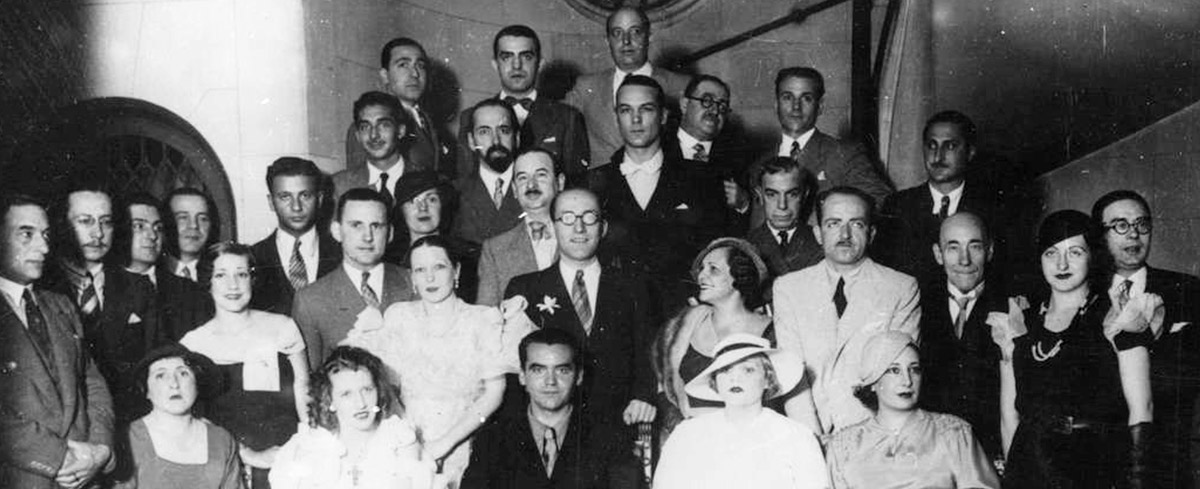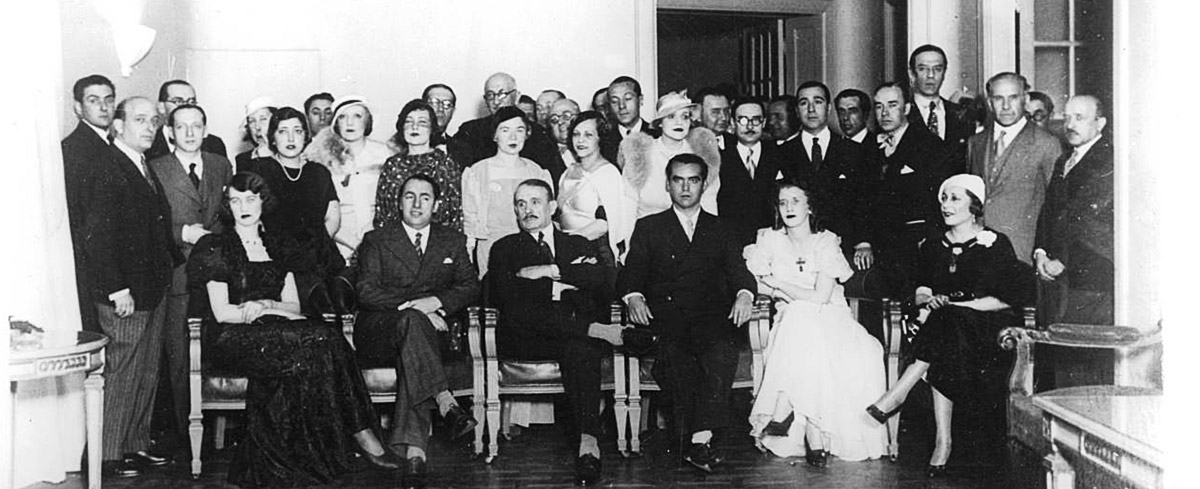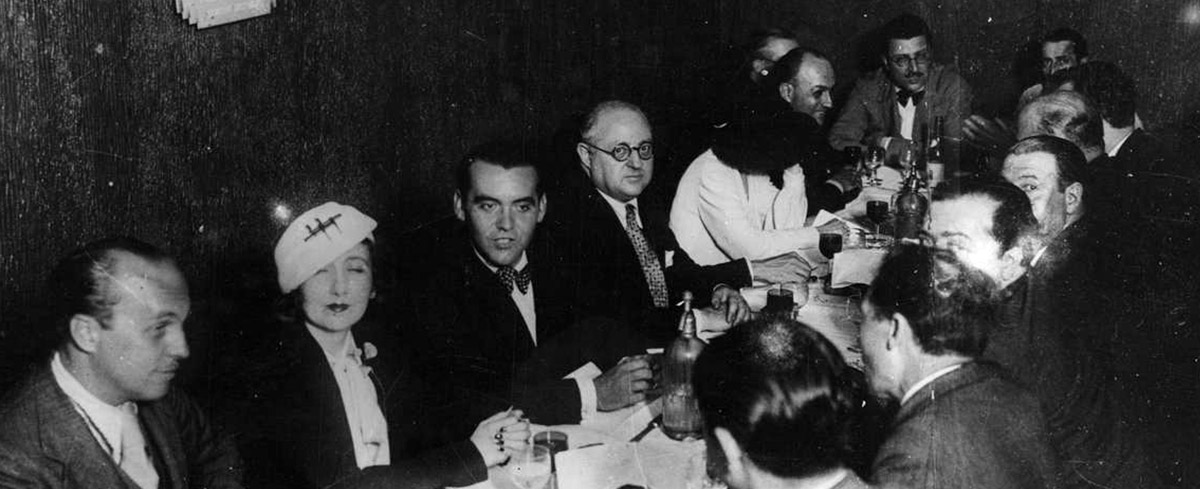Federico García Lorca “trapped” by Buenos Aires
The Spanish poet and playwright came for three weeks and ended up staying six months, seduced by our city’s magnetism.
Buenos Aires was waiting for him
The great Spanish dramatist and playwright Federico García Lorca (1898-1936) visited Buenos Aires in 1933. During his stay he developed strong ties to the city and left a legacy that remains today. Hotel Castelar, where he stayed, was the centre of his intense cultural activity.
Lorca arrived at Buenos Aires’ port on October 13 aboard the transatlantic ship Conte Grande from Barcelona. Invited by the Asociación de Amigos del Arte, (Association of Friends of the Arts), he came for the premiere of his play Blood Wedding.
The night he arrived, a dinner was held at the home of Sara Tornú (daughter of the doctor Enrique Tornú) and her husband, Pablo Rojas Paz, at Charcas 900. Other guests included the Argentine writers Norah Lange, Oliverio Girondo and Conrado Nalé Roxlo, and the Chilean Pablo Neruda.
A “museum” room
Lorca’s residence in the Argentine capital was room 704 at Hotel Castelar, the hotel located at Avenida de Mayo 1152. This central hotel is surrounded by bars and references to Spain, and Lorca had busy days with packed cultural agenda, writing, giving interviews with the press, and attending literary meetings, while at night he didn’t miss the opportunity to discover aspects of the city’s social life.
Today, “Lorca’s room” at Hotel Castelar is preserved as a museum with photos, texts, books and even clothing belonging to the poet. The person in charge of keeping Lorca’s spirit alive in the hotel is María Letizia Cáfora of the hotel’s cultural commission and a huge fan of Lorca’s live and work. Everything references the poet from the moment you arrive at the entrance to the hotel, where a plaque commemorates his stay. The corridor on the seventh floor also pays tribute to the poet’s time in Buenos Aires. María runs guided tours of the museum-room on Wednesdays, between 5pm and 6.30pm. Reservations can be made for groups and school visits.
Discover the places Lorca frequented.
A before and after
"Buenos Aires has something vibrant and personal, something that throbs dramatically, something original and unmistakable amid its thousand races that attracts and fascinates the traveller. For me it has been gentle and gallant, fun and beautiful. From a dark handkerchief springs a dove of mysterious words at this moment of farewell" – so Lorca bid farewell to the city and to his beloved Porteños.
Lorca reached the peak of his fame during his time in the Argentine capital. He was received as a celebrity, as a “bullfighter”, as he wrote in one of his letters. This was something the young poet had never experienced before. He also achieved another first in his career – thanks to the performance of his plays at Teatro Avenida, he earned a large sum of money. In Spain he lived on a low salary as director of his now celebrated La barraca, an itinerant theatre that travelled villages staging classics from the golden age of Spanish theatre. His life would never be the same again after his time on the Argentine cultural scene.
A cursed meeting
Lorca met the tango singer Carlos Gardel one night in Buenos Aires. He was leaving the theatre Smart (now Multiteatro) with the poet and journalist César Tiempo: “At Corrientes and Libertad a smile and two arms came to greet us. There was a bustle of curiosity around us. It was Carlos Gardel.” The two men exchanged a big embrace then went to Gardel’s apartment where Gardel played guitar and sang several songs, Caminito, Claveles Mendocinos, La Tropilla and Mis Flores Negras. In his biography of the poet, Ian Gibson (2011) adds that Lorca also played some Spanish songs on piano. Carlos Gardel died on June 24, 1935 in a plane accident in Medellín, Colombia. García Lorca was detained and shot by a firing squad in Granada, Spain, on August 18, 1936. Both men will always be remembered in Buenos Aires.
His legacy
The news from Spain during Lorca’s stay in Buenos Aires was not good and the decision to return was a difficult one. Two years after leaving Buenos Aires Lorca was killed. He was 38 years old.
However, the magic and mystery of Lorca endured. In 1945 his favourite daughter, Isabel, visited Argentina and stayed in the same hotel room in Buenos Aires. Another celebrity visitor who stayed in room 704 was Spanish singer Enrique Morente. Years later his daughter, Estrella, would visit the place where her father and Lorca stayed. The spirit poet of the Alpujarra hills would live on in this room, and in the theatres of Buenos Aires, where his work is still regularly staged.
Mysteries around Lorca
Lorca’s visit to Buenos Aires left something of a mystery. During his days in the city, the voice of the Spanish poet apparently featured regularly on Radio Stentor, which was based in the Hotel Castelar building, but to this day no recording has been found. The biographer Ian Gibson, who also wrote biographies on the lives of Salvador Dalí and Luis Buñuel, has commented that if a recording was ever found it could fetch a million dollars at auction and that if he was able to hear it, he would die immediately. A draw, box or storeroom somewhere in Buenos Aires may contain these valuable recordings, which would constitute one of the greatest cultural finds of the 20th century.
The whereabouts of Lorca’s body is also a mystery that continues to bring up new theories. Peruvian writer Santiago Rocangliolo published in 2012 El Amante Uruguayo (The Uruguayan Lover), a novel which speaks of the link between the Spanish poet and the Uruguayan writer and cultural promoter Enrique Amorim, who it claims was able to save Lorca’s body and transport it to the city of Salto in Buenos Aires Province where the poet rests to this day.
Take a stroll in Buenos Aires


